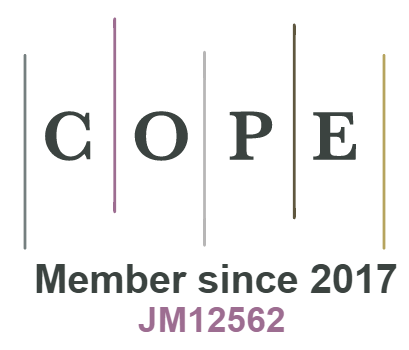Turing Stability and Natural Pattern Formation in the Gray-Scott Reaction-Diffusion System
DOI:
https://doi.org/10.18034/ei.v12i1.750Keywords:
Reaction-Diffusion Systems, Turing Stability, Gray-Scott Model, Pattern Formation, Nonlinear Dynamics, Mathematical BiologyAbstract
This paper examines the Gray-Scott model, a coupled system of nonlinear reaction-diffusion equations recognized for its capacity to produce intricate patterns. Our focus is on performing a Turing stability analysis to understand the conditions under which spatially heterogeneous structures emerge. By exploring the dynamics of the model under various parameter regimes, we demonstrate how the resulting patterns closely resemble those found in nature, such as animal coat markings, seashell textures, and chemical oscillations. The sensitivity of the model to its parameters reveals a rich spectrum of behavior, highlighting the profound connection between mathematical models and natural pattern formation.
Downloads
References
Al-Bayati, A., Manaa, S., Al-Rozbayani, A. (2008). Stability Analysis of Gray-Scott Model in One-dimension. Al-Rafidain Journal of Computer Sciences and Mathematics, 5(2), 65-71. https://doi.org/10.33899/csmj.2008.163972
Amin, A. & Mashat, D. (2021). Analysis of Gray Scott’s Model Numerically. American Journal of Computational Mathematics, 11, 273-288. https://doi.org/10.4236/ajcm.2021.114018
Diez, A., Krause, A. L., Maini, P. K., Gaffney, E. A., Seirin-Lee, S. (2024). Turing pattern formation in reaction-cross-diffusion systems with a bilayer geometry. Bulletin of Mathematical Biology. https://doi.org/10.1007/s11538-023-01237-1
Gierer, A., Meinhardt, H. (1972). A theory of biological pattern formation. Kybernetik, 12, 30–39. https://doi.org/10.1007/BF00289234
Igoshin, O. A., Neu, J., Oster, G. (2004). Developmental waves in myxobacteria: A distinctive pattern formation mechanism. Physical Review E, 70(4). https://doi.org/10.1103/PhysRevE.70.041911
Koch, A. J., & Meinhardt, H. (1994). Biological pattern formation: from basic mechanisms to complex structures. Reviews of Modern Physics, 66(4), 1481-1507. https://doi.org/10.1103/RevModPhys.66.1481
Lain, L. (2017). Turing Patterns. Degenerate State. http://www.degeneratestate.org/posts/2017/May/05/turing-patterns/
Lee, K. J., McCormic, W. D., Ouyang, Q., Swinney, H. L. (1993). Pattern Formation by Interacting Chemical Fronts. Science, 261(5118), 192-194. https://doi.org/10.1126/science.261.5118.192
Madzvamuse, A., Barreira, R., Gerisch, A. (2017). Cross-Diffusion in Reaction-Diffusion Models: Analysis, Numerics, and Applications. Progress in Industrial Mathematics at ECMI 2016, 26. https://doi.org/10.1007/978-3-319-63082-3_61
McGough, J. S., & Riley, K. (2004). Pattern formation in the Gray–Scott model. Nonlinear Analysis: Real World Applications. 5(1), 105-121, https://doi.org/10.1016/S1468-1218(03)00020-8
Meinhardt, H. & Gierer, A. (2000). Pattern formation by local self-activation and lateral inhibition. Bioessays, 22, 753-760. https://doi.org/10.1002/1521-1878(200008)22:8<753::AID-BIES9>3.0.CO;2-Z
Segel, L. A. & Jackson, J. L. (1972). Dissipative structure: An explanation and an ecological example. Journal of Theoretical Biology, 37(3), 545-559. https://doi.org/10.1016/0022-5193(72)90090-2
Downloads
Published
Issue
Section
License
Copyright (c) 2024 K. Fahad Mia; Md. Jakaria Hossen Shikder; Nasiruddin M. Himel; M. M. Rahman

This work is licensed under a Creative Commons Attribution-NonCommercial 4.0 International License.
Engineering International is an Open Access journal. Authors who publish with this journal agree to the following terms:
- Authors retain copyright and grant the journal the right of first publication with the work simultaneously licensed under a CC BY-NC 4.0 International License that allows others to share the work with an acknowledgment of the work's authorship and initial publication in this journal.
- Authors are able to enter into separate, additional contractual arrangements for the non-exclusive distribution of the journal's published version of their work (e.g., post it to an institutional repository or publish it in a book), with an acknowledgment of its initial publication in this journal. We require authors to inform us of any instances of re-publication.









